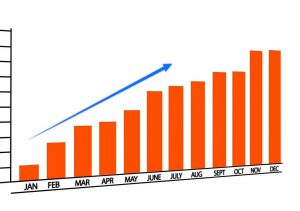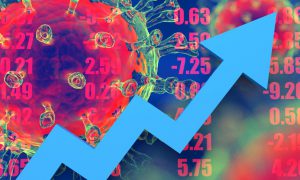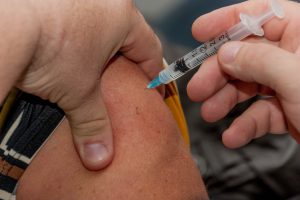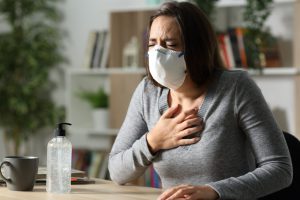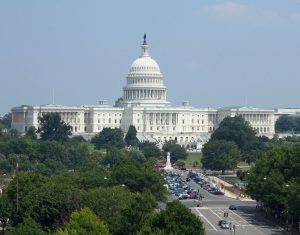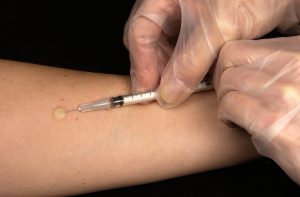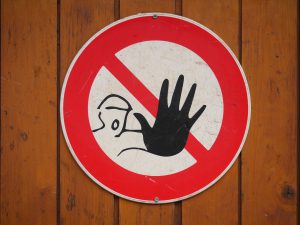There is finally light at the end of the long and dreary pandemic tunnel, as more and more adults get vaccinated against Covid-19. Case numbers are falling, and now recent studies are showing that the vaccines are effective against two Covid variants circulating in the country. Because of this hopeful news, the Centers for Disease Control and Prevention (CDC) has issued a statement that the mask mandate and social distancing are no longer necessary in most situations for those who are fully vaccinated. Lifting mask mandates could be a way to show Americans that the vaccines are effective, which will hopefully motivate more people to get vaccinated.
Decreasing Numbers
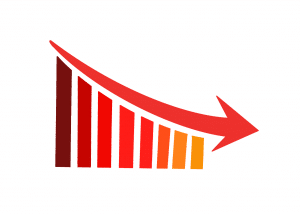
In the U.S., the numbers of new Covid-19 cases, hospitalizations, and deaths have been decreasing as more people get the vaccine. In the most recent 7 day average, new cases fell about 23%, with daily deaths declining to 587 per day. “Today, Covid-19 deaths are at the lowest point since April 2020,” Andy Slavitt, the White House Covid-19 adviser, said Thursday in a news briefing.“The trends are all going down because vaccines are making a big difference,” said Dr. Isaac Weisfuse, a medical epidemiologist at Cornell University and former New York City deputy health commissioner. “The fewer people you have who are susceptible, the more likely the trends will keep going down.”
The Effectiveness of The Vaccines
These declining numbers seem to prove the effectiveness of the Covid-19 vaccines against both the original strain of Covid-19 and the different variations that have been spreading. Recent U.S.-based studies, published in the CDC’s Morbidity and Mortality Weekly Report, show a very high success rate. One study shows that Covid-19 vaccines are 90% effective at preventing both symptomatic and asymptomatic infection among nearly 4,000 front-line workers. The second study found the Pfizer and Moderna vaccines are 94% effective at preventing Covid-19-related-hospitalizations among people 65 and older who have been fully vaccinated.
Scientists have made it clear that people who are fully vaccinated can still get infected, but these “breakthrough” cases are very rare. In fact, out of the more than 117 million people in the U.S. who are fully vaccinated, only a little over 9,245 people (or 0.00007%) have tested positive for the virus after being fully vaccinated.
CDC Guidelines
While the lifting of the mask mandate means we are one step closer to returning to “normal,” vaccinated people must still:
- Wear masks in crowded indoor settings like buses, planes, hospitals, prisons, and homeless shelters.
- Wear a mask where it is required by federal, state, local, tribal, or territorial laws, rules, and regulations, including local business and workplace guidance. Children up to the age of 12, who are not yet eligible for the vaccine, still have to wear masks.
- Get tested following a known exposure if they are employees or residents of a correctional facility or homeless shelter.
Anthony Fauci, MD, director of the National Institute of Allergy and Infectious Diseases acknowledged that people such as store or restaurant owners will have to trust others to unmask responsibly. “They will not be able to know,” he said. “I mean, you’re going to be depending on people being honest enough to say whether they were vaccinated or not.”
Recent CDC data show that only 46% of US adults are fully vaccinated, but there is hope that lifting the mask mandate will show how effective the vaccines are. President Biden also expressed his hopes, and urged more people to get vaccinated. “If you are fully vaccinated, you no longer need to wear a mask,” he said, summarizing the new guidance and encouraging more Americans to roll up their sleeves. “Get vaccinated – or wear a mask until you do.”
In addition to lifting the mask mandate, the CDC has also changed other guidelines for those who are fully vaccinated. According to the CDC, people who are fully vaccinated can travel domestically without quarantining, do not have to test before leaving the U.S., do not have to test or quarantine if they are exposed to someone with the virus, and can refrain from routine screening.


